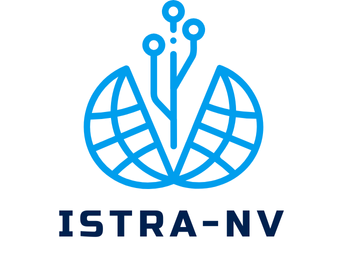Thriving in a Changing World: The Enduring Power of Evolution
In the ever-evolving landscape of our world, the concept of evolution remains a cornerstone of understanding how life adapts, survives, and thrives. From the natural world to human societies, the principles of evolution continue to shape our understanding of success and survival. This article delves into the core of evolutionary theory, its applications, and why it remains a vital framework for navigating the complexities of our modern world.
The Foundations of Evolutionary Theory
Natural Selection and the Struggle for Existence
Evolutionary theory, as laid out by Charles Darwin in his seminal work On the Origin of Species, is built around the concept of natural selection. This idea, popularized by the phrase "survival of the fittest," suggests that organisms best adjusted to their environment are the most successful in surviving and reproducing.
Also read : The Evolution of in 2024 and Beyond
Darwin's theory is rooted in three crucial elements: variation, reproduction, and heritability. Variations in physical features that benefit an organism in the struggle for existence are preserved and passed on, while those that are detrimental are selected against. This process is not absolute but relative, meaning that what confers fitness in one environment may not in another.
The Role of Herbert Spencer and Thomas Malthus
The term "survival of the fittest" was actually coined by Herbert Spencer, an English sociologist and philosopher, after reading Darwin's work. Thomas Malthus's concept of the "struggle for existence" also played a significant role in shaping Darwin's thoughts on natural selection.
In the same genre : Design eye-catching videos using event video templates
Evolution in Action: Examples and Evidence
Fossil Records and Adaptation
Fossil evidence provides strong support for evolutionary theory. For instance, the mammoth, which was well-adapted to the ice age environment, became less fit as the climate warmed and humans began to hunt it, ultimately leading to its extinction. This example illustrates how environmental changes can shift the balance of fitness for a species.
Predictive Power of Evolutionary Models
Evolutionary models have remarkable predictive power. Discoveries such as Tiktaalik, a transitional fossil between aquatic and terrestrial life, and the chromosomal fusion site in humans that reveals our genetic divergence from other great apes, highlight the accuracy of evolutionary predictions.
The Scientific Consensus on Evolution
Acceptance Among Scientists
Nearly all scientists (around 98%) accept evolution as the dominant scientific theory of biological diversity. This consensus is supported by various scientific associations and is reflected in the strong rebuttals against challenges from intelligent design proponents.
Interdisciplinary Support
Evolution is supported by multiple fields of science, including genetics, molecular biology, paleontology, geology, biogeography, comparative anatomy, comparative physiology, developmental biology, and population genetics. This consilience of evidence from different disciplines reinforces the validity of evolutionary theory.
Table: Interdisciplinary Evidence for Evolution
| Field of Science | Key Evidence |
|---|---|
| Genetics | Genetic variation and inheritance patterns consistent with evolutionary predictions |
| Molecular Biology | DNA and protein sequences showing homologies and divergences among species |
| Paleontology | Fossil records showing gradual changes and transitional forms |
| Geology | Geological time scale and stratigraphic layers supporting evolutionary timelines |
| Biogeography | Distribution of species across different geographic locations consistent with evolutionary history |
| Comparative Anatomy | Homologous structures in different species indicating common ancestry |
| Comparative Physiology | Similar physiological processes in different species reflecting evolutionary relationships |
| Developmental Biology | Embryonic development patterns showing similarities and divergences among species |
| Population Genetics | Genetic changes within populations over time consistent with evolutionary principles |
Applications and Misapplications of Evolutionary Theory
Eugenics and Social Darwinism
The concept of survival of the fittest has been misapplied in the context of eugenics, which aimed to improve the human race through selective breeding. This movement, led by Francis Galton, was based on flawed assumptions about intelligence and fitness, leading to discriminatory policies such as the 1924 Immigration Act in the United States.
Modern Relevance
Despite the misapplications, evolutionary theory remains a powerful tool for understanding biological diversity and adapting to changing environments. In fields such as medicine, agriculture, and conservation, evolutionary principles guide strategies for disease resistance, crop improvement, and species preservation.
Evolutionary Insights for Human Success
Learning from Evolutionary Algorithms
Evolutionary processes can be seen as a form of double-loop optimization, where the outer loop involves long-term evolutionary changes and the inner loop involves individual learning and adaptation. This model can be applied to artificial intelligence, where human engineers tinker with different machine learning strategies, similar to how evolution tunes biological systems.
Human Learning Strategies
Human intelligence, shaped by millions of years of evolution, integrates vast amounts of information from our evolutionary history. While it is challenging to replicate human learning strategies in AI, understanding the evolutionary basis of human intelligence can provide valuable insights into developing more efficient learning algorithms.
Evolutionary theory is more than just a scientific concept; it is a framework for understanding how life adapts and thrives in a changing world. From the natural selection that shapes species to the eugenic missteps that highlight the dangers of misapplication, evolution remains a vital part of our scientific and societal discourse.
As we navigate the complexities of the modern world, the principles of evolution offer us a roadmap for success. By understanding how organisms adapt, how environments change, and how learning strategies evolve, we can better prepare ourselves for the challenges ahead.
In a world where adaptability is key, the enduring power of evolution serves as a reminder that success is not static but dynamic, shaped by the continuous interplay between organisms and their environments. As we look to the future, embracing the lessons of evolution can help us thrive in an ever-changing world.











